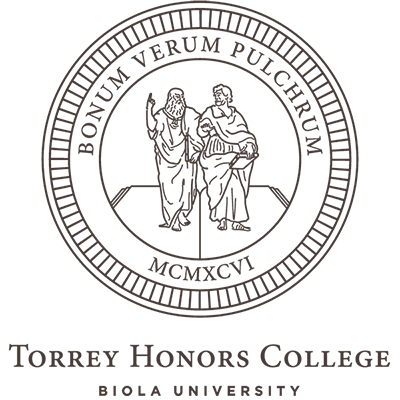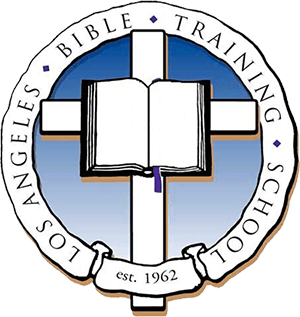A scene from the Leben der heiligen Altväter (1482)
The New Normal TrinitarianismReview of Our Triune God: Living in the Love of the Three-in-One By Philip Graham Ryken, Michael LeFebvre
Center for Pastor Theologians / Society for the Advancement of Ecclesial Theology website
The New Normal Trinitarianism
I hope that Philip Ryken and Michael Lefebvre’s little book Our Triune God: Living in the Love of the Three-in-One (Crossway, 2011) represents the status quo in evangelical trinitarianism. I think it does; written by a pastor (Lefebvre) and the president of Wheaton College (Ryken), and weighing in at just about 100 pages, this book doesn’t claim to be doing anything new or bombastic. This is not an “everything you thought you knew is wrong” book, or an attempt to revolutionize your theology with shocking new information. The authors write with passion about their great topic, but they are also calm and credible. Their book is all about “helping Christians grow in their relationship to God in his triunity” (p. 15). Ryken and Lefebvre don’t think there’s a major problem on the evangelical Trinity front, and they’re not staging an intervention. They’re not bringing the latest results out of the laboratory for the big reveal. They just think Christians need steady instruction, mostly “by way of reminder” (2 Peter 3:1), on this core doctrine.
There are several reasons why I think, and I hope, this book symbolizes the new normal trinitarianism for evangelicals. On my shelves I have about thirteen feet of books about the Trinity. Some of them are by ancient authors, but most of them are from the last few decades. Dozens of them are popular‑level presentations, each promising to take this hard doctrine and make it matter for regular Christians. They’re a mixed bag, these popular‑level books on the Trinity. There are a few mistakes they usually stumble into that limit their helpfulness. Sometimes the books blunder so badly that they are more likely to hurt than help. You pick them up curious, and you put them down confused, demotivated, and distracted from the gospel. I love Ryken and Lefebvre’s Our Triune God because it deftly sidesteps all those bear traps.
What are the conventional traps? Here is my idea of how to write the worst possible Trinity 101 book: Start with the warning that readers’ eternal souls are at stake if they are wrong about the Trinity, and follow that up (on the same page if possible) with the admission that nobody can understand the doctrine anyway. Then jump into a concordance-like review of the biblical evidence, starting with the Old Testament and emphasizing the most ambiguous elements of it (the plural form of Elohim, the “let us make” statements, the threefold repetition of “Holy”). Insist that these have the value of proofs. Move quickly through the New Testament’s main story, lingering only at the triadic formulas, and then camp out in the statements of the ecumenical councils and church fathers, giving the impression that everything was unclear until smart people got creative in the fourth century. Insist that majority ruled at Nicaea, so we should follow that. Suggest that everybody had forgotten about the Trinity until your book came along, and finish off with a generous exploration of all kinds of analogies for the Trinity (iceberg, shamrock, apple, egg) before admitting that all analogies are kind of limited.
None of the Trinity books on my shelf are quite that bad. Not one of them commits every error! Nevertheless, these weaknesses are pervasive in the “popular Trinity book” genre.
The good news –and what makes Our Triune God the best book to put in somebody’s hands if they’re asking for an introduction to the doctrine– is that Ryken and Lefebvre simply leapfrog over all those errors as if they never existed, and get down to the serious business of teaching the Trinity the right way. What constitutes “the right way?” Two things stand out: Ryken and Lefbvre’s presentation is biblical and gospel centered.
First, on the biblical front, Our Triune God has only four chapters to cover a lot of ground. So instead of skittering all over the biblical witness, gathering here a verse and there a verse, the authors settle into a few key texts. Chapter 1, “The Saving Trinity,” explores salvation in trinitarian terms by examining Ephesians 1, that inexhaustible text that Warfield said “should never be read in church: it should always be sung” (p. 38). Chapter 2 does go broader (more on that shortly), but Chapter 3, “The Practical Trinity,” focuses on John 13-17, “where Jesus teaches his disciples to relate to God as triune.” Chapter 4, “The Joyous Trinity,” is an interesting survey of key points in the gospel of Luke where the evangelist “does not show us the Son only, but also the Father and the Spirit in their Trinitarian relationship with the Son” (p. 96). While Ephesians and John are likely suspects for trinitarian theologizing, Luke’s gospel has not always been recognized as such. By the time Ryken and Lefebvre have finished their tour of it, though, the profound trinitarianism of Luke shines out clearly. In Luke 10:21, Jesus “rejoiced in the Holy Spirit and said, ‘I thank you, Father…” The authors comment:
Because Jesus is God the Son, his joy is a divine rejoicing. It is a perfect joy, unspoiled and undiminished by sin. But here his joy is especially intense because he is rejoicing in the revelation of the Holy Spirit and in the secret, saving work of his Father. Luke is showing us the joy at the heart of the universe, the rejoicing that takes place within the Godhead, where God is both the subject and the object of his own joy. The Father, the Son, and the Spirit glory in one another (p. 106).
The payoff of investing in Paul, John, and Luke is great. Readers can see that the trinitarianism of the New Testament is not scattered around the surface of the book in a few proof texts, but is actually organically there (really there!) in the main themes of the major authors.
Second, on the gospel-centered front, the whole book is “not only theological but also biblical, and therefore practical” (p. 15). It traces the mystery of the Trinity as a mystery of salvation, of union with God in Christ, and of cultivating communion with God in the fellowship of the church. The Ephesians chapter shows that
salvation is administered by the Father, accomplished by the Son, and applied by the Spirit. The mystery at the epicenter of the universe –namely, the triune being of God—is also the heart of our salvation. Our redemption is Trinitarian in its structure (p. 20).
The John chapter argues that “the believer’s relationship with the triune God calls for application in everyday life” (p. 70), and shows “the specific ways Jesus instructs us to respond to each of the three Persons in our daily Christian lives” (p. 71). The Luke chapter takes us back into the life of Christ, his command to take the message of salvation to the world, and climaxes, in appropriately Lukan fashion, with gratitude for the gift of the Holy Spirit in person (p. 113). This book keeps its eyes on the gospel at all times, and uses the doctrine of the Trinity to keep bringing readers back to that central point.
Chapter 2, “The Mysterious Trinity,” is not devoted to any one particular biblical witness. Instead, it clears the ground for the rest of the book, removing a couple of stumbling blocks that some readers may have. First, it takes up the charge that Trinitarianism seems logically contradictory, arguing briefly that there is no strict logical contradiction in conceiving one being who is three persons. “In reality, the difficulty that people sense and generally think of as a logical problem is actually an analogical problem” (p. 40). That is, there aren’t any other three-personed beings to offer as examples. Dismissing the quest for analogies in one tidy page, Ryken and Lefebvre instead ponder the fact that “reality is full of strange phenomena… difficult to come to grips with, not because they are untrue or illogical, but because they are unlike anything familiar to us” (p. 46). The second stumbling block the authors remove in this chapter on mystery is the question of “whether New Testament Trinitarianism is consistent with Old Testament monotheism” (p. 47). This question opens up the whole field of the Old Testament’s witness to the Trinity, and the authors do provide a very helpful 15-page overview of Old Testament evidence (pp. 51-66). But crucially, they first clarify expectations. What are the Old and New Testaments, after all? Ryken and Lefebvre give a brief meditation that ought to be mandatory reading for preachers and teachers:
The Bible records a story whose main character (God) is revealed to us as the story is told. Every new twist in the plot reveals new complexities of and new insights into the great Protagonists’s character. We must be careful, therefore, not to expect the clear vision of his triune nature encountered in the New Testament (only after the incarnation and Pentecost) to be as clearly presented in the Old Testament. The vagueness with which God’s inner-plurality is described in the Old Testament records is not a problem for Trinitarianism –so long as the evidence of his inner-plurality is really there (pp. 50-51).
Our Triune God could of course be expanded to include a lot more information. But what it does, it does very well. The authors made all the right decisions about getting the main points across, and they have a cheerful confidence that readers will know where to get further instruction (they rightly recommend Robert Letham’s The Holy Trinity as the next step, especially for an introduction to the development of trinitarian doctrine; Letham wrote the foreword to Our Triune God).
This modest little book is a sign of great hope: the new normal in how evangelicals approach the doctrine of the Trinity. Apparently there is such a thing as evangelical trinitarianism: biblically articulate, gospel centered, and unharrassed by side issues. It’s small and accessible; get it into as many hands as you can.
___________________________
Back when the Center for Pastor Theologians was still called the Society for the Advancement of Ecclesial Theology, editor Jason Hood invited me to write this review for their website or its blog. The content has since gone missing from CPT/SAET’s website, so I’ve moved it here as a permanent record (screencap below via Wayback Machine). Justin Taylor also picked up on the review for his TGC blog.

 Fred Sanders
Fred Sanders

